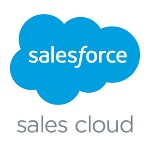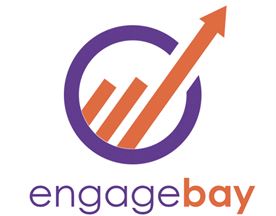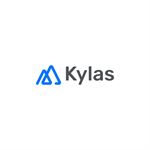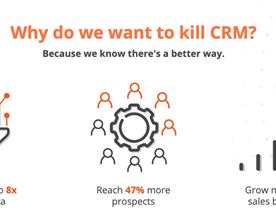As a business owner, it’s important to understand the difference between consumers and customers. While these terms are often used interchangeably, they actually refer to two distinct groups of people with different characteristics and needs.
Consumers are individuals who use goods and services for personal use. They may be influenced by a variety of factors when making purchasing decisions, such as price, quality, and convenience.
Customers, on the other hand, are individuals who purchase goods and services from a business. They often have specific expectations for the quality and level of service they receive, and may be more loyal to a particular business if those expectations are met.
Understanding the differences between consumers and customers is essential for businesses that want to effectively market their products and services. By tailoring their strategies to appeal to both groups, businesses can attract a wider range of potential buyers and increase their chances of success in the market.
Consumer Definition and Characteristics
Consumers are individuals who use goods and services for personal use. This can include everything from groceries and household items to entertainment and travel.
When making purchasing decisions, consumers are often influenced by a variety of factors. These can include the price of the product, its quality and functionality, and the convenience of obtaining it. For example, a consumer may choose to purchase a cheaper, lower-quality product if it meets their basic needs and is more easily accessible than a higher-quality alternative.
Consumers also tend to be more concerned with their own personal needs and preferences than with the reputation or loyalty to a particular business. They may be more likely to shop around and compare prices and options before making a purchase.
Understanding these characteristics of consumers can help businesses tailor their marketing and sales strategies to appeal to this group. For example, highlighting the convenience and affordability of a product may be more effective in attracting consumers than emphasizing its prestige or exclusivity.
Customer Definition and Characteristics
Customers are individuals who purchase goods and services from a business. They may be loyal to a particular brand or company, and often have specific expectations for the quality and level of service they receive.
Customers may be more willing to pay a higher price for a product or service if it meets their expectations and offers a good value. They may also be more likely to return to a business if they have had a positive experience in the past.
In addition to expecting high-quality products and services, customers may also have expectations for the overall customer experience. This can include things like a friendly and knowledgeable staff, easy-to-navigate websites and physical storefronts, and a convenient and efficient checkout process.
Businesses that are able to consistently meet the expectations of their customers are more likely to retain their loyalty and build long-term relationships with them. Understanding the characteristics and needs of customers can help businesses develop strategies to attract and retain this valuable group.
Differences Between Consumers and Customers
While both consumers and customers are individuals who purchase goods and services, there are some key differences between the two groups. Understanding these differences can be important for businesses that want to effectively market their products and services.
One of the main differences between consumers and customers is their relationship with businesses. Consumers are generally more focused on their own needs and preferences when making purchasing decisions, and may not have a strong connection to any particular business. Customers, on the other hand, may be more loyal to a particular brand or company and have specific expectations for the products and services they receive.
Another difference is in their purchasing behavior. Consumers may be more likely to shop around and compare prices and options before making a purchase, while customers may be more willing to pay a higher price for a product or service that meets their expectations and offers a good value. Customers may also be more likely to return to a business if they have had a positive experience in the past.
In terms of marketing and customer service strategies, businesses may need to approach consumers and customers differently. For example, a business may use promotional discounts and other incentives to attract the attention of consumers, while focusing on building long-term relationships and consistently meeting customer expectations to retain customer loyalty.
It’s important for businesses to understand the needs and preferences of both consumers and customers in order to be successful in the market. By tailoring their strategies to appeal to both groups, businesses can attract a wider range of potential buyers and increase their chances of success.

Tools for Managing Customers and Consumers
There are a variety of tools that businesses can use to help manage customers and consumers. Some examples include:
- Customer Relationship Management (CRM) software: This type of software helps businesses track and manage customer interactions and data throughout the customer lifecycle, including marketing, sales, and service. It can help businesses identify and target key customer segments, optimize their marketing efforts, and improve customer service.
- Customer feedback and survey tools: These tools allow businesses to gather feedback and insights from customers about their experiences, preferences, and needs. This information can be used to identify areas for improvement and optimize the customer experience.
- Marketing automation software: This software helps businesses automate and optimize their marketing efforts, including email marketing, social media marketing, and lead generation. It can help businesses target the right customers with personalized messages and offers.
- Customer service and support tools: These tools can help businesses manage customer inquiries and issues efficiently and effectively. Examples include live chat software, knowledge management systems, and customer service ticketing systems.
- Social media management tools: These tools can help businesses manage and track their social media presence, including monitoring and responding to customer comments and reviews.
By using these and other tools, businesses can better understand and manage their customers and consumers, and improve their overall customer experience.
Conclusion
Understanding the difference between consumers and customers is essential for businesses that want to effectively market their products and services. Consumers are individuals who use goods and services for personal use, and may be influenced by a variety of factors when making purchasing decisions. Customers, on the other hand, are individuals who purchase goods and services from a business and may have specific expectations for the quality and level of service they receive.
There are several key differences between consumers and customers, including their relationship with businesses and their purchasing behavior. By understanding these differences and tailoring their marketing and customer service strategies to appeal to both groups, businesses can attract a wider range of potential buyers and increase their chances of success in the market.















